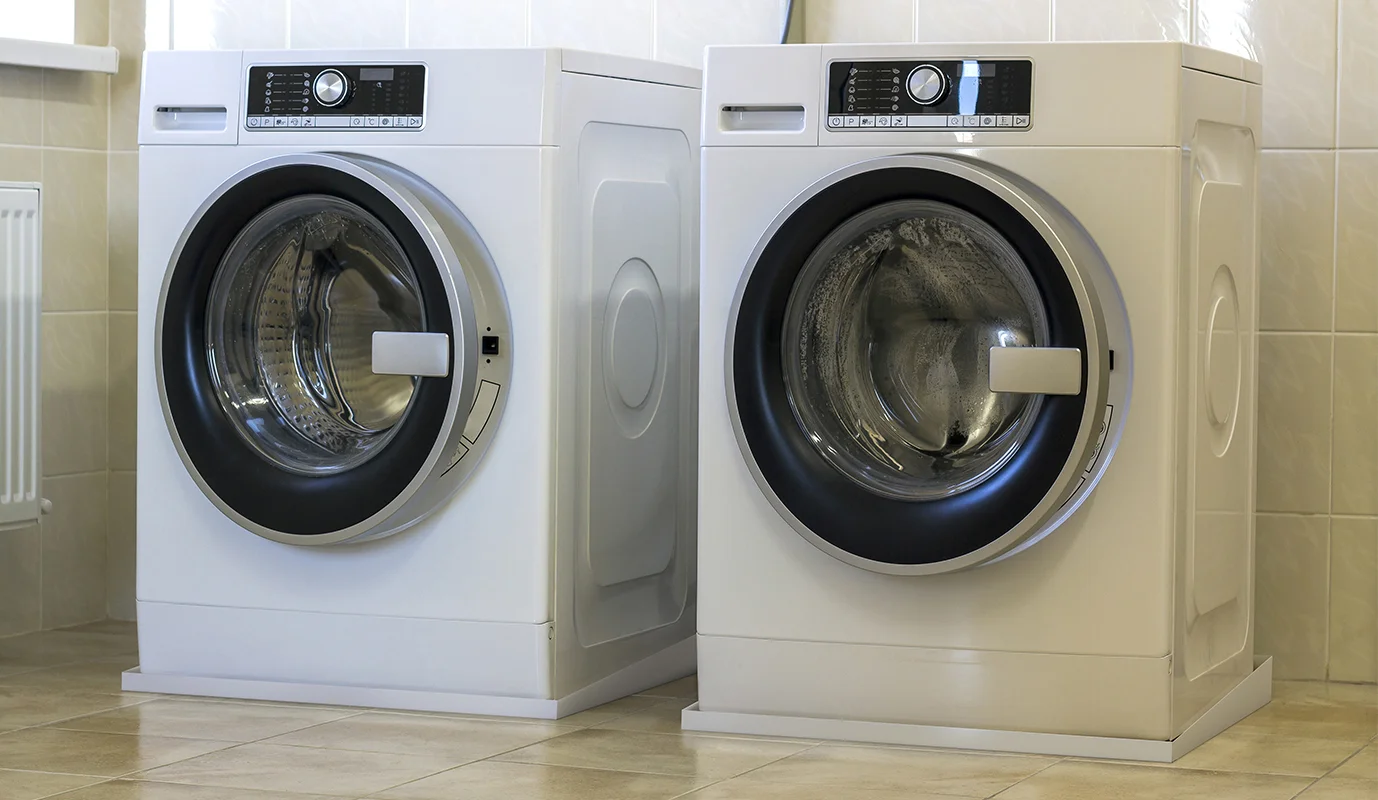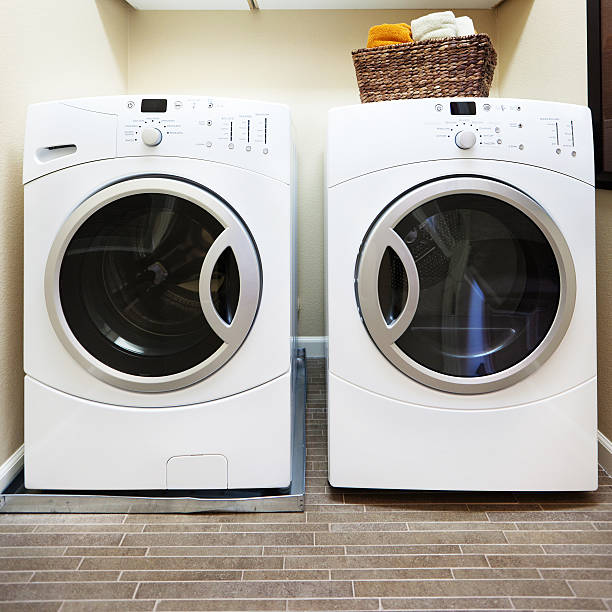The humble washing machine, a staple of every household, quietly goes about its business day in and day out.
Yet, beneath its unassuming exterior lies a question that often goes unnoticed: “Do I need a drip pan under my washing machine?”
At first glance, it might seem like a minor concern, but the implications of this decision can ripple through your home maintenance and peace of mind.
So, I will discuss the potential risks, benefits, and considerations that come with installing or forgoing a drip pan.
Join me on this journey as I uncover the hidden complexities of this household choice.
Do I Need a Drip Pan Under My Washing Machine?
Using a drip pan under your washing machine may be a good precaution to help prevent potential damage and water-related issues in your home. While it’s not always a strict necessity, it offers several benefits that make it a worthwhile investment.
First and foremost, a drip pan safeguards against unexpected leaks or overflows from your washing machine. Washing machines can develop leaks over time due to wear and tear, deteriorating hoses, or simply accidents like an unbalanced load causing water to spill.
Without a drip pan, such incidents can lead to water damage to your floors, walls, and even the ceiling below if your laundry room is on an upper floor.
Furthermore, a drip pan can help you identify leaks promptly. The pan collects water, allowing you to notice and address issues before they escalate into costly repairs. This early detection can save you money on repair and water damage restoration bills.
Ultimately, while not a strict necessity, installing a drip pan under your washing machine is a practical and cost-effective way to protect your home from potential water damage. It provides peace of mind and helps maintain a safe and functional laundry area.

When Is a Drip Pan Necessary?
- Age of the washing machine: Older washing machines may be more prone to leaks due to wear and tear on hoses and seals. If your washing machine is nearing the end of its lifespan, it’s a good idea to install a drip pan as a precautionary measure.
- Location of the laundry area: If your laundry room is situated on an upper floor or above a finished living space, the risk of water damage from a washing machine leak is higher. In such cases, a drip pan becomes more crucial to prevent water from seeping through and causing structural damage.
- Frequency of use: Homes with high washing machine usage, such as large families or those operating commercial-grade machines, may benefit from a drip pan. Frequent use increases the likelihood of wear and tear, making leaks more probable.
- Cost considerations: Weigh the cost of purchasing and installing a drip pan against the potential expenses associated with water damage repairs. It may be a cost-effective choice in the long run, especially if you live in an area with high labor and repair costs.
Types of washing machines that may require a drip pan
- Top-loading washing machines: These machines have a vertical drum orientation and typically have a traditional-style agitator. While they are less prone to leaks compared to front-loaders, they can still develop issues over time, especially if the hoses or connections become compromised.
- Front-loading washing machines: Front-loaders have a horizontal drum orientation and are known for their water efficiency. However, they can be more susceptible to leaks due to the intricate door seals and rubber gaskets. Installing a drip pan is often recommended for front-loading machines.
- High-capacity and commercial-grade washing machines: These machines are used in settings where large volumes of laundry are processed regularly. Given their heavy usage, the risk of leaks is higher, making drip pans a sensible choice to protect against water damage.
- Compact and stackable washing machines: Compact laundry appliances are often installed in tight spaces, such as closets or small laundry rooms. A drip pan is essential in these scenarios, as any leak can quickly damage surrounding walls and flooring.
Also read: Why Do Washing Machines Shake Like Crazy?
What Size Washing Machine Pan Do I Need?
The size of the washing machine pan you need will depend on the size of your washing machine. However, you can follow some general guidelines to help you choose the right size pan for your machine.
For top-loading washing machines, you will need a pan at least 18 inches wide and 24 inches deep. For front-loading washing machines, you will need a pan at least 24 inches wide and 28 inches deep.
For portables and compact washing machines, you will need a pan that is at least 15 inches wide and 20 inches deep.
Keep in mind that these are just general guidelines – be sure to consult the specifications of your particular washing machine to determine the exact size of pan you will need.
If possible, it’s always a good idea to have a slightly larger pan than what you think you need, as this can help prevent any water damage in the event of a leak or other issue with your washer.
How to Install a Drip Pan
- Prepare the workspace: Clear the area around your washing machine to provide ample space for installation. Ensure the machine is disconnected from power and water sources.
- Choose the right drip pan: Select a drip pan that matches the size of your washing machine. Drip pans come in various dimensions, so measure the width and depth of your machine to find a suitable fit.
- Position the drip pan: Slide the drip pan into place beneath your washing machine. It should sit level and flat on the floor, providing a secure base for your appliance.
- Secure the washing machine: Carefully move your washing machine onto the drip pan. Ensure it’s centered within the pan, with all four corners of the machine resting evenly on the pan’s surface.
- Connect drainage and vent hoses: If your washing machine has drain and vent hoses, carefully attach them while ensuring they don’t kink or twist. Make sure these connections are secure to prevent any potential leaks.
- Level the washing machine: Use a bubble level to ensure your washing machine is perfectly level within the drip pan. Adjust the leveling feet on the washing machine if necessary.
Maintaining and Cleaning a Drip Pan
To ensure your drip pan remains effective at protecting your home from potential washing machine leaks, follow these maintenance tips:
- Regular inspections: Periodically check the drip pan for any signs of damage or wear. Look for cracks, rust, or weak spots, and replace the pan if needed.
- Cleanliness: Keep the drip pan clean by wiping it down with a damp cloth or mild detergent as necessary. Removing dust and dirt helps maintain its integrity.
- Inspect the drainage hole: Many drip pans have a drainage hole to direct collected water away. Ensure this hole remains clear and unobstructed to prevent overflow.
- Position checks: Recheck that the washing machine remains properly centered within the drip pan, especially if you move the machine or perform maintenance.
Addressing any collected water or debris
- Remove water: If the drip pan collects water due to a washing machine leak or spill, use a bucket or a wet/dry vacuum to remove the water promptly. Ensure the pan is empty after each use.
- Inspect for leaks: If water accumulates regularly, investigate the cause by checking your washing machine for leaks, loose connections, or damaged hoses. Repair any issues promptly to prevent further leakage.
- Clean debris: If debris or lint accumulates in the drip pan, remove it to prevent blockages. Regularly clean the area around the washing machine to minimize debris buildup.
- Inspect for mold or mildew: In damp environments, mold and mildew can develop. Regularly inspect and clean the drip pan to prevent these issues, especially if your laundry area lacks ventilation.

Conclusion
Do I need a drip pan under my washing machine? The need for a drip pan under your washing machine depends on various factors, including the machine’s age, location, and usage frequency. While not necessary for all, drip pans are a prudent preventive measure.
They offer protection against water damage, aid in leak detection, and are especially crucial in upper-floor laundry spaces.
Investing in a drip pan can save you from expensive repairs and ensure your laundry area remains safe and functional.







